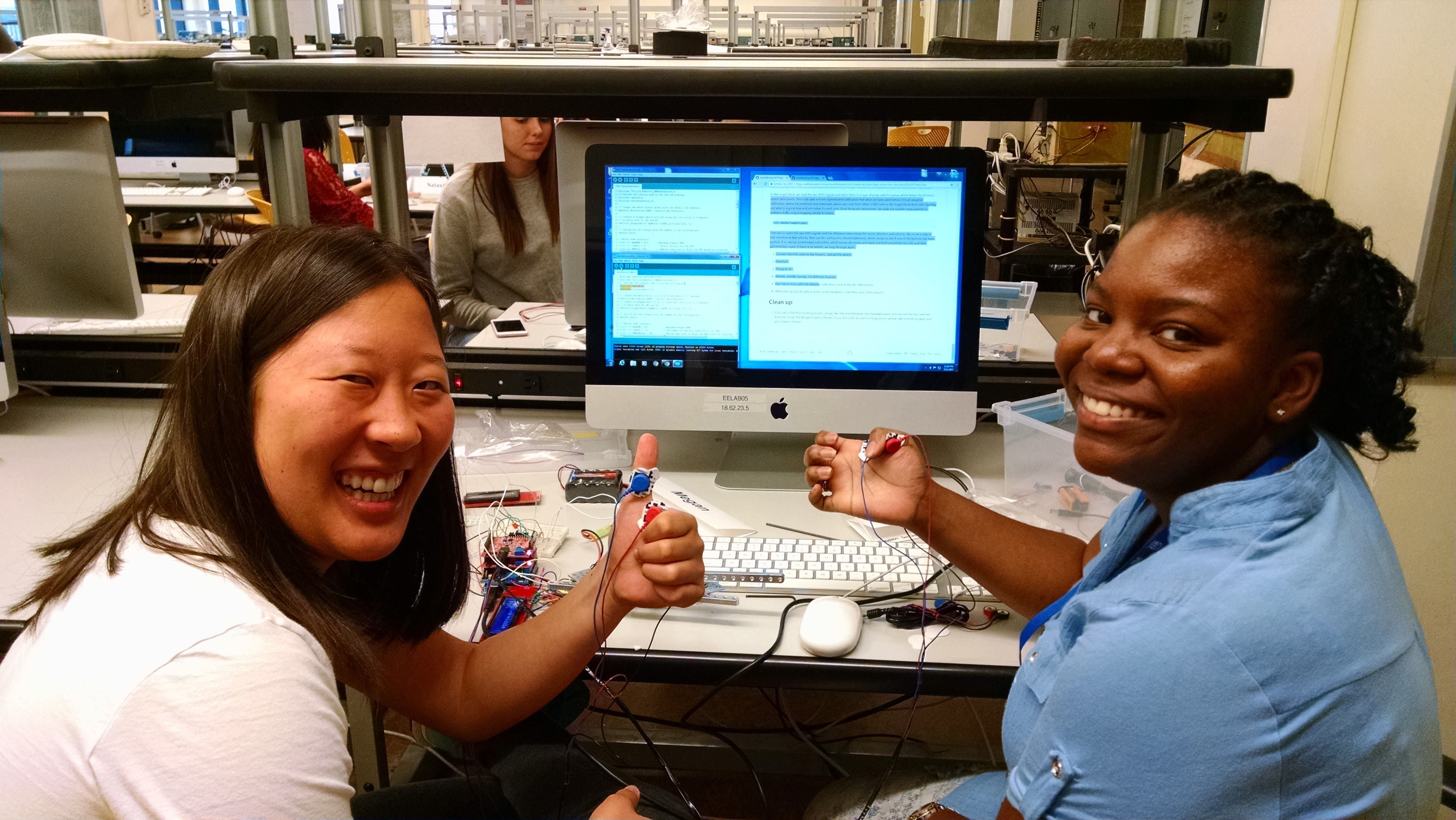Over Four Weeks at MIT, High School Girls Visualize a Future in Engineering
-
-
Slice of MIT
Filed Under
Recommended

Malika Shahrawat ’18 didn't grow up with dreams of becoming an engineer. At her Missouri high school, which had limited resources in STEM, “I really enjoyed and did well in my math and science classes, but I wasn’t sure exactly what I wanted to do or even what I could do with it in the future,” she recalls. She discovered her love for electrical engineering and computer science (EECS) when she first visited MIT—not yet as a prospective student, but as a participant in the MIT Women’s Technology Program (WTP), a rigorous four-week residential program for female rising high school seniors.
WTP director Cynthia Skier ’74, SM ’81 says Shahrawat represents the perfect student for WTP: someone with interest and aptitude, but who otherwise wouldn’t have the opportunity to explore engineering or computer science before college. WTP isn’t connected to MIT Admissions; its purpose is not to be a feeder for the Institute but to spark girls’ interest in pursuing engineering at any college they attend. WTP students follow one of two tracks—EECS and Mechanical Engineering—and work in teams to brainstorm solutions, write code, and build engineering projects.
I really enjoyed and did well in my math and science classes, but I wasn’t sure exactly what I wanted to do or even what I could do with it in the future.
The program has evolved since it first started in 2002—by now, it’s worked with 925 female students, 85 percent of whom go on to pursue a STEM college major. For the summer 2019 session, WTP received 620 applications for 60 spots (the application period, which runs through the fall, closed in January).
It costs the program about $8,000 to house, feed, and support each student during the month she lives on campus, and that number keeps rising. “However, we only charge students $3,500, or waive the fee entirely based on family income level. Eventually we’d like to make the program free for everyone,” Skier says. “We think that would encourage more students to apply who might be discouraged by the cost.”
The program’s alumnae include current MIT EECS assistant professor Tamara Broderick, who completed her undergraduate and graduate years at Princeton and UC Berkeley and is a WTP guest speaker. The instructors, who are MIT graduate students or post-docs, change each year. So do the tutors, who are MIT undergraduate students.
“The strongest thing about the program is that it is taught by women who act as mentors and role models. It’s not just about communicating the material,” explains Skier. “Conversations outside of classes include students asking their teachers: How did you decide on your major? What colleges did you apply to? It helps them visualize their futures.”
For Shahrawat, that process was transformative: She earned her undergraduate degree at MIT in Course 6-3, computer science and engineering, and is staying an extra year to get her master’s in engineering.
“Through WTP I learned what engineering is and what engineers do in the real world. Even though the work we did then seems so trivial to me nearly six years later, it was eye-opening for high school me. It gave me a glimpse of how I can use math and science to solve real-world problems. It also gave me confidence that, even as a girl, I could do engineering.”
She added, “WTP made the world of EECS more tangible and real and gave me the passion and confidence to pursue it.”
Once she graduates, she’ll be a data scientist working on machine learning models in New York. “I can almost call myself a computer scientist now,” she says.
Coming this Pi Day, March 14: The Women’s Technology Program is one of more than 50 MIT groups that will participate in microchallenges to unlock bonus gifts during the third annual MIT 24-Hour Challenge. Join us, and collaborate with MIT alumni, students, parents, and friends to fuel the future at MIT. If 6,283 MIT alumni, students, parents, and friends give to MIT on March 14, 2019, an anonymous challenger will give the Institute $314,159, fueling the future at MIT and around the world.







